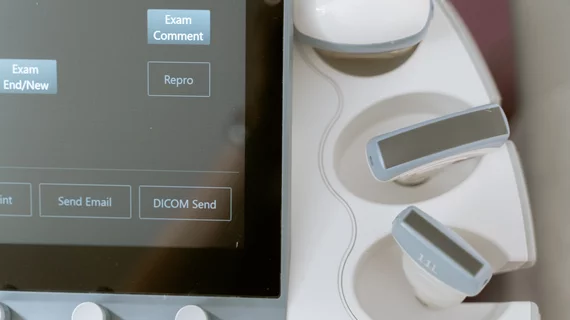Ultrasound is crucial to prenatal care, yet new evidence reveals ‘substantial’ disparities
Ultrasound imaging is a cornerstone of prenatal care, yet new evidence shows that many patients aren’t receiving the same treatment as others.
Looking over more than 80,000 pregnancies, researchers found “substantial” disparities in US utilization among patients in rural and remote areas, those living in low-income neighborhoods and Indigenous peoples.
Such groups were also less likely to undergo a second trimester exam, which is recommended between 18-22 weeks’ gestation for all pregnant women, experts explained Aug. 24 in Academic Radiology.
The authors believe these disparities may reflect structural barriers to accessing ultrasound during pregnancy and should be analyzed to help close gaps in maternity imaging.
“This study may inform the development of programs and services targeted towards sociodemographic groups and geographic regions which currently have lower rates of obstetrical ultrasound utilization to ensure that all women have equitable opportunity for obstetrical ultrasound imaging,” Scott J. Adams, MD, with the Department of Medical Imaging at the University of Saskatchewan in Canada, and co-authors explained.
Adams and co-investigators analyzed 57,881 pregnant women who underwent a US exam between 2014-2018 in Saskatchewan, Canada. At least one ultrasound was performed during 88.4% of pregnancies, with the average mother-to-be undergoing 3.3 exams.
And of the 57,186 pregnancies carried to 23 weeks or longer, 87.7% (50,180) underwent a second trimester ultrasound.
Breaking down the data further, the group found older age, comorbidities and pregnancy risk factors, along with higher neighborhood, income were significantly associated with a higher rate of exams. For example, patients in the highest income areas were 86% more likely to undergo a second trimester exam compared to those residing in the lowest income neighborhoods.
The authors proposed a number of potential solutions to help narrow disparities in care, including the use of telerobotic ultrasound for remote and rural populations. Adams and co-authors found success using the technique during the pandemic. Overall, the relationship between access and utilization is a complicated one, the group noted. But they believe their research will prompt others to take on the issue.
“It is our hope that this study stimulates further work exploring solutions to overcome these systemic barriers, including the use of innovative technologies to improve access to diagnostic ultrasound services for vulnerable and marginalized populations,” the researchers concluded.

